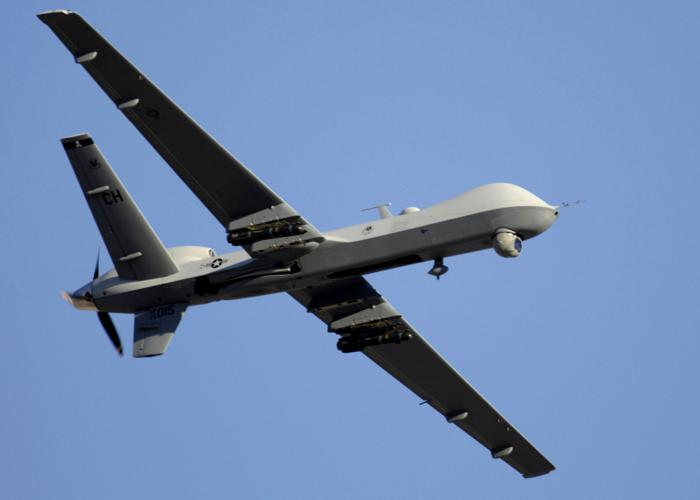Davis-Monthan Air Force Base is on the short list to become a new home base for drone pilots.
The Air Force announced Thursday that D-M is one of the five final possible locations for a new unit that will remotely pilot MQ-9 Reaper drones.
In December 2015, the Air Force announced that D-M was one of 19 potential locations for the new mission.
“Today, D-M made the cut from 19 bases to the final five because (of) our robust command and control and communications infrastructure and overall high quality of life for airmen and their families,” U.S. Rep. Martha McSally of Tucson said in a news release Thursday, adding that drone operations are a vital and growing part of the Air Force’s mission.
Ramón Valadez, a Pima County supervisor who sits on the Governor’s Military Affairs Commission, said, “I am very, very excited. Anything that adds to the mission of D-M is a very positive thing for our community.”
“I am looking forward to this, and any other possible mission in the future,” Valadez said.
The Pentagon plans to retire a mainstay at D-M, the A-10 Thunderbolt II ground-attack jet, in 2022.
The Reaper conducts military missions around the world and has air-to-ground missiles, Valadez explained. If D-M is selected, “the pilots will be located at D-M and control the aircraft from here. The drones would actually be in areas where there are air operations.”
The Air Force said other locations it is considering to control the Reaper include Moody Air Force Base in Georgia; Mountain Home Air Force Base in Idaho; Offutt Air Force Base in Nebraska; and Shaw Air Force Base in South Carolina.
The Air Force will also select a second location that is expected to have up to 24 MQ-9 aircraft assigned. It would potentially host a full MQ-9 wing. The Air Force bases that are candidates for that mission are Eglin and Tyndall, both in Florida; Vandenberg in California; and Shaw.
The Air Force will now begin to conduct site surveys at all of the potential locations.
Survey teams will assess each location against requirements, potential impacts to existing missions, infrastructure and manpower. They will also develop cost estimates to locate the planned units.
D-M became home to its first modern unmanned aircraft unit in 2007, when the 162nd Air Guard added the 214th Reconnaissance Squadron, whose pilots and sensor operators remotely operate MQ-1 Predator drones overseas. (The base housed a unit that dropped reconnaissance drones during the Vietnam War.)
The 214th is transitioning to the larger, heavier and more capable MQ-9 Reaper, and recently received the first of six Reapers it is to operate by fiscal 2017.
Unmanned aircraft have become an important part of the Air Force’s arsenal, performing nonstop intelligence gathering, surveillance and, in some cases, attack missions without endangering pilots.









